#Intersex hida viloria
Text

Born Both by Hida Viloria
My name is Hida Viloria. I was raised as a girl but discovered at a young age that my body looked different. But unlike most people who are born intersex, I grew up in the body I was born with because my parents did not have my sex characteristics surgically altered at birth.
It wasn't until I was twenty-six and encountered the term intersex in a San Francisco newspaper that I finally had a name for my difference, but when I finally found an intersex community to connect with I was shocked, and then deeply upset, to learn that most of the people I met had been scarred, both physically and psychologically, by infant surgeries and hormone treatments meant to "correct" their bodies.
Born Both is the story of my lifelong journey toward finding love and embracing my authentic identity in a world that insists on categorizing people into either/or, and of my decades-long fight for human rights and equality for intersex people everywhere.
#Born Both#Hida Viloria#bookblr#intersex awareness#intersex#genderfluid#daily book#nonbinary#queer#queer rep#adult books#lgbt nonfiction#lgbtqia#memoir#nonbinary protagonist#nonfiction#queer books
6 notes
·
View notes
Text
Intersex Awareness Day

Born Both: An Intersex Life by Hida Viloria
I got this ebook from the library due to @qbdatabase 's post a few days ago, and as I get to the last chapter, it mentions Intersex Awareness Day --- TODAY, the day I am finishing reading it.
I don't know what sign that is, but the book is super interesting. It's a memoir of one of the first prominent intersex activists. It addresses how babies born between genders were, and still are (!!) being mutilated at birth to "normalize" them, intersex people's fight to not be labeled with stigmatizing medical terminology, as well as much of Hida's personal journey. It was interesting to read different perspectives of early intersex activists and how Hida's perspective sometimes clashed with those who didn't want associated with the LGBTQ community.
Also neat to read how nonbinary perspectives often can align with intersex perspectives. I also learned the word cisgender can erase intersex people.
Some of the appearances s/he mentioned in the book are up on Youtube, including a Montel Williams interview from the 90s.
13 notes
·
View notes
Text

Meant to post these photos yesterday for Trans Day of Rememberance but I had a lot going on. I’m always at a lost for what to do on this day, but I feel like I need to do something besides just reposting memes.
So as a librarian, I thought I would share some of the books from my collection written by and/or about trans, non-binary and gender-nonconforming folks. Maybe y’all will find something new to read.
(Stuffed Tullimonstrum and Helicoprion buzz-saw Blåhaj for scale).


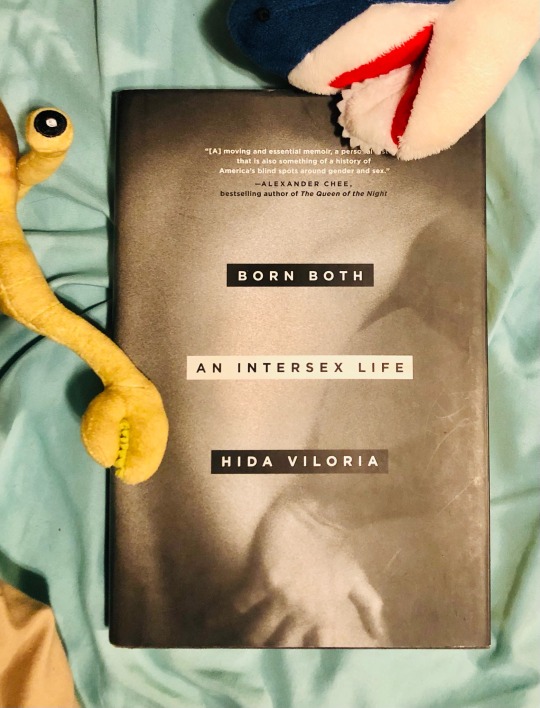
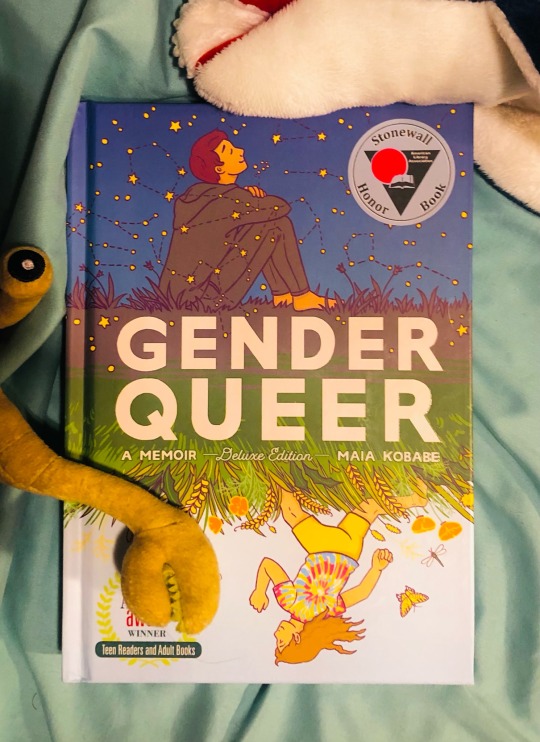
Also some fiction books written by trans/nonbinary authors
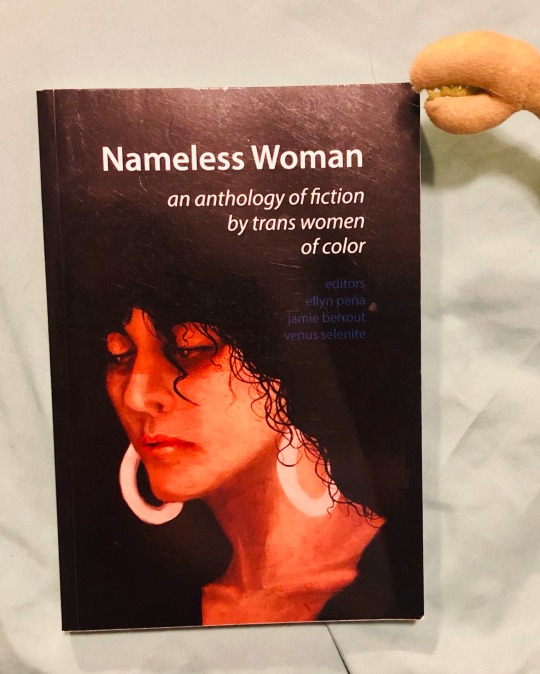
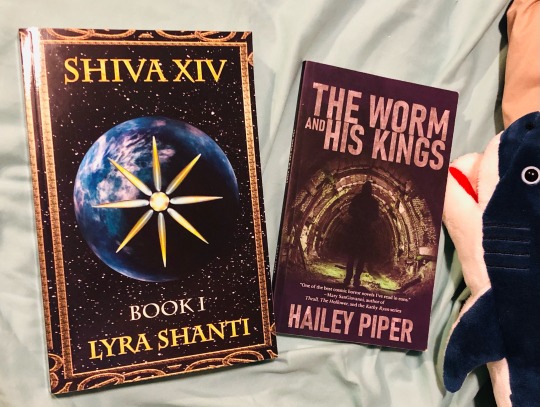

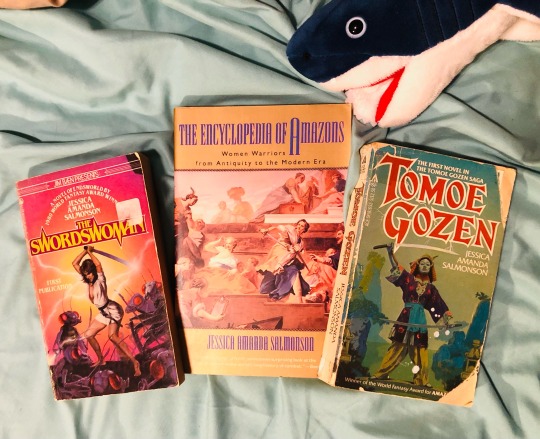
And in case you can’t read all the titles
Gender Queer by Maia Kobabe
Born Both: An Intersex Life -Hida Viloria
Trans New York -Peter Bussian
‘O Au no Keia: Voices from Hawai’i’s Mahu and Transgender Communities -Andrew Matzner
Nonbinary: Memoirs of Gender and identity edited by Micah Rajunov and Scott Duane
Nameless Women: an anthology of fiction by Trans Women of Color- editors: Ellyn Peña, Jamie Berrout, and Venus Selenite
Refuse- Elliot DeLine
I Know Very Well How I Got My Name- Elliot DeLine
Shiva XIV: Book I -Aryl Shanti
The Encyclopedia of Amazons -Jessica Amanda Salmonson
Tomoe Gozen Jessica Amanda Salmonson
The Swordswoman -Jessica Amanda Salmonson
The Worm and His Kings- Hailey Piper
7 notes
·
View notes
Text
June is CAH Awareness Month | What it means to me in 2020
June is CAH Awareness Month | What it means to me in 2020
CAH Awareness Month & June Pride Month 2020
Up until this year, I typically have not celebrated June CAH Awareness month, because of the CAH (Congenital Adrenal Hyperplasia) organizations and groups not even acknowledging my sex is intersex and that I am an intersex man. I do believe that this is all due to their prejudice and bias. Serendipitously, CAH Awareness Month lands during June PRIDE…
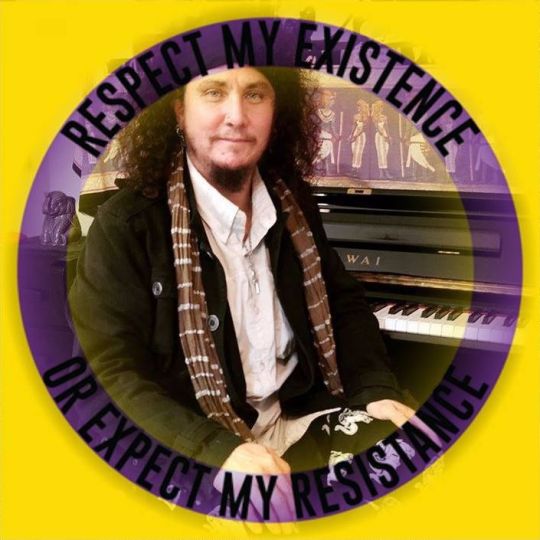
View On WordPress
#46 XX Intersex#Brian of Gender Revolution#CAH#Congenital Adrenal Hyperplasia#Hida Viloria#Homophobia#Human Rights#Intersex#Intersex Awareness#Intersex Birth Certificate#Intersexphobia#June Pride Month#Sara Kelly Keenan#Self-Determination#Sophia DeJesus-Sabella#Transphobia#We Are Human#We Are Real#We Exist#XX Intersex Man
4 notes
·
View notes
Photo

Hida Viloria
Gender: Intersex - Non binary (s/he & he/r)
Sexuality: Lesbian
DOB: May 1968
Ethnicity: Latinx - Colombian, Venezuelan
Occupation: Writer, activist
#Hida Viloria#non binary#intersex#lesbian#1968#poc#Venezuelan#Colombian#hispanic#writer#activist#neopronouns
41 notes
·
View notes
Photo

Did you know that being intersex is as common as having red hair?
In honor of tomorrow’s Intersex Awareness Day (October 26th), the Hormel Center would like to acknowledge the “I” in our LGBTQIA family with some background on what exactly intersex is as well as a few book and history center recommendations for materials related to these often misunderstood lived experiences. The term intersex is commonly misused to describe the presence of ovotestes when in actuality intersex describes the presence, absence, or a mixture of human sexual characteristics that do not fit current binary definitions of Female and Male. These varied designations based on reproductive organs, gonads, and chromosomes occur at a rate of 1 in every 2000 births and can be made at in utero, at birth, following a delayed or non-existent puberty, whenever reproductive issues present themselves, or even posthumously.
If you would like to learn more about intersex justice and life with these conditions, please check out
David Cameron Strachan Intersex A/V Materials 6th Floor - History Center
Call #: GLC 54
Contesting Intersex: The Dubious Diagnosis 3rd Floor - Hormel Center
Call #: 306.7685 D2933c
Born Both: An Intersex Life 3rd Floor - Page Desk
Call #: 306.7685 V719b
Intersex: A Perilous Difference 3rd Floor - Page Desk
Call #: 616.694 H7369i
Orchids: My Intersex Adventure
https://sfpl.kanopy.com/video/orchids
#intersex#intersex awareness day#intact#intersex justice#hida viloria#morgan holmes#georgiann davis#lgbtqia#LGBT Rights
5 notes
·
View notes
Link
#Hida Viloria#intersex#lgbtq#trans#transgender#gender non-conforming#non-binary#queer#activism#intersex visibility#lgbtq issues#lgbtq visibility#lgbtq history#resources#reading
67 notes
·
View notes
Note
Do you know of any books with intersex characters? Preferably the main character. Or the mc's love interest.
Yep! You can always find these here: https://lgbtqreads.com/representation/gender-identity/
MG
Cattywampus by Ash Van Otterloo
YA
Double Exposure by Bridget Birdsall
None of the Above by I.W. Gregorio
That Inevitable Victorian Thing by E.K. Johnston
The Names We Take by Trace Kerr
Pantomime, Shadowplay, and Masquerade by Laura Lam
Just Ash by Sol Santana
Confessions of a Teenage Hermaphrodite by Lianne Simon
Adult
Across the Green Grass Fields by Seanan Maguire
An Unkindness of Ghosts by Rivers Solomon (SFF)
Born Both by Hida Viloria (memoir)
33 notes
·
View notes
Text
2021
Let’s actually read this year! This is my yearly ‘talk to me about books’ post where I’ll update my reads throughout the year. Been doing it for several years now see here’s 2020′s. It’s sad. But the next years were less so! See 2022 here!
A Court of Thorns and Roses by Sarah Maas
This is How You Lose the Time War by Amal El-Mohtar and Max Gladstone
Sparrow Hill Road by Seanan McGuire
No Visible Bruises: What We Don’t Know About Domestic Violence Can Kill Us by Rachel Louise Snyder
Her Royal Highness by Rachel Hawkins*
The Magician’s Assistant by Ann Patchett
Gideon the Ninth by Tamsyn Muir*
Labyrinth Lost by Zoraida Córdova
Well, That Escalated Quickly: Memoirs and Mistakes of an Accidental Activist by Franchesca Ramsey
A Court of Mist and Fury by Sarah J Maas
Shattered by Lee Winter
Burnout: The Secret to Unlocking the Stress Cycle by Amelia & Emily Nagoski
In the Vanisher’s Palace by Aliette De Bodard
Not your Sidekick by C.B. Lee
Harrow the Ninth by Tamsyn Muir*
Cry Wolf by Patricia Briggs*
Not Your Villain by C.B. Lee
All the Light you Cannot See by Anthony Doerr
Fire by Kristin Cashore*
A Good Time to Be Born: How Sicence and Public Health Gave Children a Future by Perri Klass
The Guernsey Literary and Potato Peel Pie Society by Mary Anne Shaffer and Annie Barrows
The Golden Compass by Phillip Pullman*
Magic for Liars by Sarah Gailey
Sooner or Later Everything Falls into the Sea: Stories by Sarah Pinsker
The Subtle Knife by Phillip Pullman*
A Court of Wings and Ruin by Sarah J Maas
Pride, Prejudice, and Other Flavors by Sonali Dev
Machinehood by S.B. Divya
Queenie by Candice Carty-Williams
Body Respect: What Conventional Health Books Get Wrong, Leaves Out, and Just Plain Fail to Understand about Weight by Linda Bacon & Lucy Aphramor
The Amber Spyglass by Phillip Pullman*
Detransition, Baby by Torrey Peters
In the Dream House: A Memoir by Carmen Maria Macado
Born Both: An Intersex Life by Hida Viloria
Fable by Adrienne Young
Dear America: Notes of an Undocumented Citizen by Jose Antonio Vargas
Dreadnought by April Daniels*
Hunger: A Memoir of (My) Body by Roxane Gay
Emperor Mage, The Immortals Book III by Tamora Pierce*
Something to Talk About by Meryl Wilsner
And the Band Played On: Politics, People, and the AIDS Epidemic by William Greider and Randy Shilts
Pride and Prejudice by Jane Austen*
Sovereign by April Daniels*
A Beautiful Poison by Lydia Kang*
The Body Keeps the Score: Brain, Mind, and Body in the Healing of Trauma by Bessel Van Der Kolk
Daughter of the Pirate King by Tricia Levenseller
After the Revolution by Robert Evans
The Goldfinch: A Novel by Donna Tart
In the Woods by Tana French
Welcome to Night Vale: A Novel by Joseph Fink and Jeffery Cranor*
The World of Lore: Dreadful Places by Aaron Mahnke
The Strange Case of Dr. Jekyll & Mr. Hyde by Robert Louis Stevenson
The Only Good Indians by Stephen Graham Jones
The Halloween Moon by Joseph Fink
The Coldest Girl in Cold Town by Holly Black
The Best of Edgar Allan Poe by Edgar Allen Poe
The Witches by Roald Dahl
The House on the Cerulean Sea by TJ Klune
Whipping Girl: A Transexual Woman on Sexism and the Scapegoating of Femininity by Julia Serano
Sherlock Holmes: A Study in Scarlet by Sir Arthur Conan Doyle
Tipping the Velvet by Sarah Waters*
A Christmas Carol by Charles Dickens*
*Re-read
21 notes
·
View notes
Text
10 Biology Non-Fiction Books by BIPOC (Black, Indigenous, & People of Colour) Authors
Every month Book Club for Masochists: A Readers’ Advisory Podcasts chooses a genre at random and we read and discuss books from that genre. We also put together book lists for each episode/genre that feature works by BIPOC (Black, Indigenous, & People of Colour) authors. All of the lists can be found here.
Science in Black and White: How Biology and Environment Shape Our Racial Divide by Alondra Oubré
The Spectrum of Sex: The Science of Male, Female and Intersex by Hida Viloria and Maria Nieto
Naming Nature: The Clash Between Instinct and Science by Carol Kaesuk Yoon
Braiding Sweetgrass: Indigenous Wisdom, Scientific Knowledge, and the Teachings of Plants by Robin Wall Kimmerer
Gathering Moss: A Natural and Cultural History of Mosses by Robin Wall Kimmerer
Monarchs and Milkweed: A Migrating Butterfly, a Poisonous Plant, and Their Remarkable Story of Coevolution by Anurag Agrawal
The Gene: An Intimate History by Siddhartha Mukherjee
The Emperor of All Maladies: A Biography of Cancer by Siddhartha Mukherjee
I Contain Multitudes: The Microbes Within Us and a Grander View of Life by Ed Yong
World of Wonders: In Praise of Fireflies, Whale Sharks, and Other Astonishments by Aimee Nezhukumatathil
7 notes
·
View notes
Text
Prompt 43 Rec List
Here are some recs for prompt 43 of the Diverse Reading Challenge 2020. The full prompt list is here.
43. A book with an intersex protagonist
Pantomime - Laura Lam
A YA fantasy, it follows a intersex teenager. When she finds out her parents are planning to surgically alter her, she runs away to the circus. She also displays some magical abilities, and has a mysterious connection to magical glass relics from a distant age.
If you like fantasy, or have ever wanted to join the circus, this is the book for you.
Note: The following books I have not personally read but are all on my to read list
Double Exposure - Bridget Birdsall
A YA novel, it follows a intersex girl who after her dad’s death moves to a new city and tries out for the girl’s basketball team. But after she is exposed, she might be disqualified from the basketball team unless she can prove she is a girl.
Confessions of a Teenage Hermaphrodite - Lianne Simon
A novel, it follows an intersex girl, raised as a boy, through her coming of age.
Annabel - Kathleen Winter
A historical fiction novel, it is set in the 1960′s, and follows an intersex boy, and his relationship with the three women who have guarded his secret.
Born Both: An Intersex Life - Hida Viloria
A memoir, it tells of the author’s experiences growing up intersex, and finding a community.
If you would like to join the Diverse Reading Challenge 2020, please follow the tumblr! Spread the word! Submit recs of diverse books you love!
6 notes
·
View notes
Note
(intersex anon) thanks for your quick response! It was Hida Viloria's autobiography "Born Both". I was concerned that *me* wanting a specific genital configuration that could be categorized as intersex was a bad thing. Sorry for the confusion. I think you covered it in your answer but does this change anything?
I know somebody replied to the post asking for the book so they’ll be happy to have the name here.
I do still think what I wrote in that post is valid here: you cannot control what you feel and desires like that, and it’s comon enough for wlw to have feelings like they want to both penetrate and be penetrated. Straps are poopular for a reason.
However it is important that the people who live with that genital configuration have to deal with a lot of medical discrimination/opression, as well as similar fear that stealth trans people who haven’t had GCS have to deal with when it comes to talking to their potential sexual partners about genitals, on top of just that nagging feeling of “being different” that really sucks.
It’s completely valid to feel like having that type of genital config would be neat/convenient, and that isn’t fetishizing in on itself. But just focusing on that withou taking the social context into it can be very fetishy and dehumanizing towards the reality of those people.
Again, I am perisex and I’m saying this based on what intersex people have said, as well as my own knowledge of being another minority and my education in sociology and power dynamics. I could be totally off-base with what most intersex people feel and if that’s the case, message us and I’ll correct what I got wrong.
-mod liz
1 note
·
View note
Link
Intersex people are born with chromosomal, hormonal, gonadal, or genital variations that differ from social expectations of what male and female bodies should be like. Even as we begin or continue to challenge binary understandings of gender and sexuality in the anti-violence movements, many of us have not stopped to question the assumption that there are only two biological sexes – and anything else is not “normal” or acceptable. Social discomfort with this aspect of human diversity has resulted in discrimination and marginalization of intersex people, including medically unnecessary surgeries that they have not consented to.
While there has been a shift away from seeing intersex conditions as a problem to be dealt with medically (a practice that became popular in the medical community in the 1960s), these types of unwanted “corrective” surgeries do continue today. Adults who have experienced these medically unnecessary surgeries, also known as Intersex Genital Mutilation (IGM), experience trauma common to many adult survivors of child sexual abuse. The impact of such surgery includes shame, stigmatization, physical harm, and emotional distress. Anti-violence advocates should be prepared to provide trauma-informed care to those who have experienced trauma surrounding IGM.
As you reflect during Pride Month on your efforts to reach out to LGBTQ+ communities, consider ways you can increase your capacity to meet the needs of intersex individuals who may be dealing with trauma related to IGM.
Intersex Community & Inclusion
https://youtu.be/cAUDKEI4QKI
There is great diversity of experience in the intersex community, and diverse ways intersex individuals think about community, activism, needs, and goals. There is also a wide-ranging response to whether or not intersex people should inherently be considered part of the LGBTQ+ communities. One reason that someone might take the position that intersex identity is not part of LGBTQ+ communities may be the opinion that LGBTQ+ movements have, at least in recent history, been primarily concerned with relationship recognition and concerns around identity, and not as much with bodily autonomy.
On the other hand, including intersex as part of LGBTQ+ communities can lead to more visibility of intersex experiences, and can address a common root cause of discrimination: harmful adherence to the gender binary and related gender norms. Writer and intersex advocate Hida Viloria makes this case in the article The Forgotten Vowel: How Intersex Liberation Benefits the Entire LGBTQIA Community:
“When we recognize the rights of intersex people to have their identities recognized, we dismantle the very foundation of the binary sex and gender system which has harmed LGBTQIA people for centuries.”
For more reading on this topic, check out this blog post by Viloria and another intersex activist, Dana Zzyym, which explores many of the diverse ways intersex individuals approach issues of identity.
Note the distinction between being transgender and being intersex. Being transgender has to do with having an internal understanding of one’s gender that is different than what was assigned at birth. This assignment typically has to do with the external anatomy – babies with a vagina are assigned female at birth and babies with a penis are assigned male. A transgender person has a gender identity that is different from that assignment, whether female, male, non-binary, or other genders.
People who have intersex conditions, though, have anatomy that has not been historically considered by societies to be typically male or female. An intersex individual may be transgender, but the majority of intersex individuals do not identify as transgender, and the majority of transgender individuals do not identify as intersex.
Living at the Intersections
Intersex people of color are disproportionately impacted by physical, psychological, and medical violence. Historically, people of color have faced unspeakable atrocities including exploitation at the hands of the medical industrial complex. Activist Sean Saifa Wall reflected on these intersecting identities in a recent interview with NBC:
"I draw a very distinct parallel between how the medical community has inflicted violence on intersex people by violating their bodily integrity, and how state violence violates the bodily integrity of Black people… My desire for intersex liberation is totally [entwined] with Black liberation. They cannot be teased apart.” (2016)
Additionally, intersex activists and survivors of color are marginalized within the intersex movement itself – facing underrepresentation in leadership roles, lack of visibility and voice in public spaces, and limited opportunity to engage with other intersex people of color.
By honoring and lifting up the unique experiences of intersex people of color, by asking them what they need to feel heard and to feel safer in our collective spaces, we can build a more intersectional, anti-racist, trauma-informed movement. For more information, read the Statement from Intersex People of Color on the 20th Anniversary of Intersex Awareness Day and the Intersex People of Color for Justice Statement for Intersex Awareness Day (IAD) 2017, which emphasizes, "We are a just movement that has our vision set on attaining bodily autonomy for all."
The Experiences of IGM Survivors
To explore what intersex advocates are saying about intersex genital mutilation, check out this video from Teen Vogue in which three intersex advocates address what some forms of IGM specifically entail, and how they’re unnecessary and nonconsensual.
One of the advocates in the video, Pigeon Pagonis, discloses the experience of having the clitoris removed, and later having a vaginoplasty at age 11. Pagonis makes the connection that one of the underlying reasons for these operations was to make the vagina “more accommodating to my future husband’s penis” – underscoring one example of how harmful societal assumptions about what male and female bodies should look like (and how sex should happen between men and women) forms justification for these invasive medical surgeries. One of the other advocates in this video, Hanne Gaby Odiele, helps make the connection to trauma, by claiming, “Those surgeries need to stop because they bring so much more complications and traumas.”
A 2017 report from Human Rights Watch called “I Want to Be Like Nature Made Me”: Medically Unnecessary Surgeries on Intersex Children in the US contains information on the history and impact of IGM, including insight into the trauma mentioned by Odiele in the video. In one testimonial from an adult survivor of intersex genital mutilation, Ruth, age 60, shares: “I developed PTSD and dissociative states to protect myself while they treated me like a lab rat, semi-annually putting me in a room full of white-coated male doctors, some of whom took photos of me when I was naked.” The report goes on to illustrate forms of psychological harm and emotional distress that adult survivors of intersex genital mutilation may experience.
When working with a survivor of intersex genital mutilation, consider that control was taken away from the survivor in the nonconsensual, medically unnecessary surgery. These surgeries may receive legitimacy simply because they take place in a medical context, which we tend to view as being associated with consent and authority. But the root of the perceived “need” for this surgery is embedded in social standards about what male and female bodies should look like, not medical need. We need to move away from the notion that there might be an underlying medical justification for this abusive touching (Tosh, 2013).
Shifting Our Culture
Working to end false binaries of sex, gender, and sexuality can be an important first step in preventing IGM and many forms of violence. Developing an understanding of intersex peoples’ experiences by reading intersex history and listening to intersex people share their stories when offered can deepen your understanding of who is part of our communities and how we can provide trauma-informed care to everyone who needs our services. A first step can be to become familiar with intersex organizations like Intersex Society of North America, interACT, and Intersex Campaign for Equality. Another can be to educate colleagues on trauma related to IGM, and to make efforts to directly engage the community in which your agency wants to provide welcoming and relevant services to intersex people. Shifting our culture to end the shame, secrecy, exploitation, and abuse of intersex people will require broad level systemic change driven by all of us.
What can you do to positively impact the lives of intersex survivors in your community?
References:
Human Rights Watch, interACT. (2017, July). “I Want to Be Like Nature Made Me”: Medically Unnecessary Surgeries on Intersex Children in the US. Retrieved from https://www.hrw.org/sites/default/files/report_pdf/lgbtintersex0717_web_0.pdf
Tosh, J. (2013). The (In)visibility of Childhood Sexual Abuse: Psychiatric Theorizing of Transgenderism and Intersexuality. Intersectionalities: A Global Journal of Social Work Analysis, Research, Polity, and Practice. Retrieved from http://journals.library.mun.ca/ojs/index.php/IJ/article/view/739/743
Image from InterACT Advocates for Intersex Youth.
256 notes
·
View notes
Photo
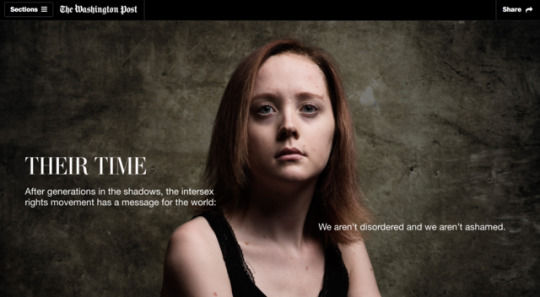


For a long time, most intersex people thought of their physical differences as something akin to a disease. Indeed, rather than using the label “intersex,” most physicians and many parents still prefer to talk about “disorders of sex development” — in other words, problems for doctors to fix. In 2000, the American Academy of Pediatrics went so far as to declare the birth of an intersex child a “social emergency.” (Since then, the AAP has grown more circumspect. “DSD may carry a stigma,” states a position paper adopted in 2006.)
But now activists are turning that argument around: Instead of talking about intersex people as medical subjects, they are speaking the language of identity, human rights and pride. They want doctors, parents and society at large to take a less rigid approach to sexual identity — and especially to reconsider the assumption that, to identify as a man or a woman, a person needs the gonads, genitals and chromosomes to match. “There is a much bigger focus now on intersex identity politics — on letting the world know that we are intersex people, as opposed to people with medical conditions,” says longtime activist Hida Viloria, a chair of the Organization Intersex International and author of a new memoir, “Born Both.” To Viloria, surgeries that aim to make children more conventionally male or female are “a gendercide, an institutional effort to erase us from society.”
There have been, in recent years, signs that the activists are making progress. In 2011, the United Nations’ Committee Against Torture released a statement critical of nonconsensual intersex surgeries; two years later, the panel went further, declaring that the surgeries often “arguably meet the criteria for torture.” [...]
These developments are in step with the larger disability rights movement, which argues for replacing assumptions of “bad-difference” with acceptance of “mere-difference,” in the terminology of philosopher Elizabeth Barnes. And they likewise echo the gay and transgender rights movements, which have risen to the surface of American politics and culture over the past generation. Now, in an era when society has proved open to revisiting other identities that were once considered shameful or taboo, is the intersex community finally on the brink of its own revolutionary moment — one that could transform what was a disorder into just another way for a person to be?
ICYMI, the Washington Post recently published a prominent feature story about the intersex rights movement and the folks leading it. Intersex pals, I would love to hear from you about this: what did you make of the story? Was it fair and thorough? What would you have liked to see changed or added?
1K notes
·
View notes
Link
Thank you, Hida Viloria and PidgeonPagonis!
#casimir pulaski#intersex#revolutionary war#Cares Foundation#my body my choice#rights of the child#human rights#american history#stop igm#end intersex surgery#delay is okay
2 notes
·
View notes
Photo
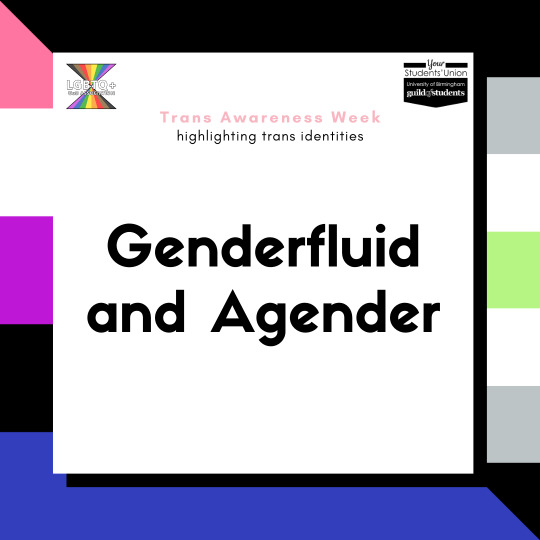
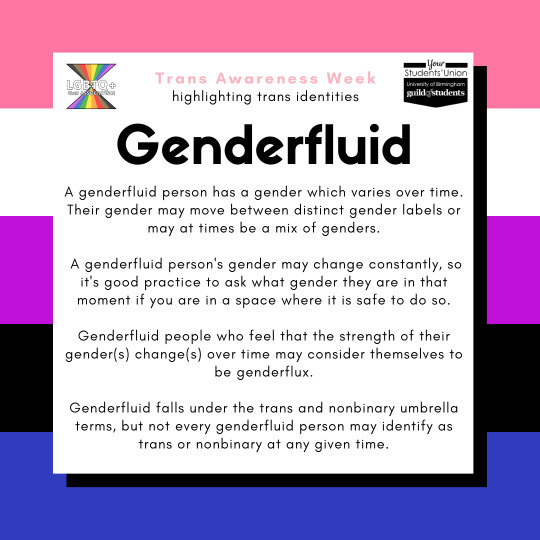
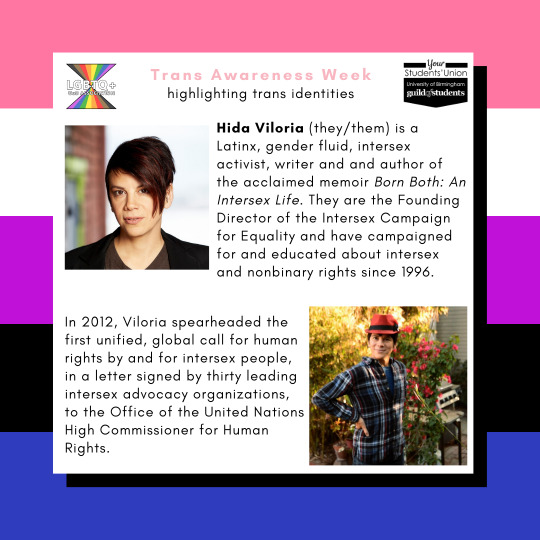

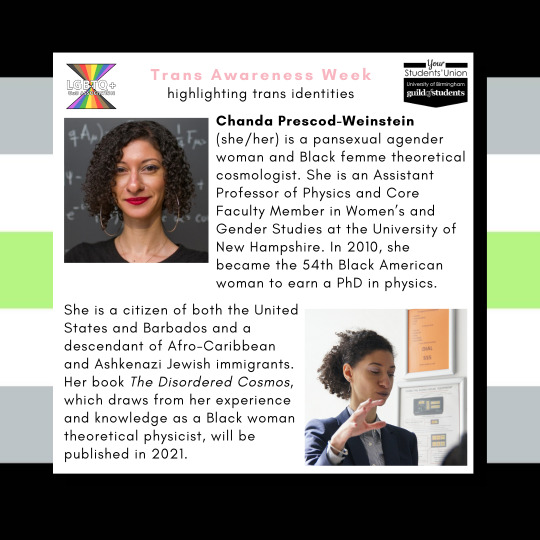
On day 5 of Trans Awareness Week, we are highlighting the labels genderfluid and agender. We would also like to take this opportunity to provide some resources for trans people, and for allies looking to better support the trans people in their lives.
Gendered Intelligence (GI) is a trans-led charity working across the UK, specialising in supporting young trans people aged 8-25. They run youth groups, public engagement campaigns, professional training, and have numerous resources available on their website: http://genderedintelligence.co.uk/
Gender Construction Kit provide UK-specific guides to changing things linked to gender, such as changing your name, updating your ID documents, or using makeup: https://genderkit.org.uk/
Transing Your Gender is a guide to socially and legally transitioning in the UK, as well as living your best life as a trans person and dealing with transphobia. It includes links to resources specifically for trans people of colour, disabled trans people, older trans people, trans prisoners, trans sex workers, trans people dealing with mental health issues and addiction, and trans migrants, refugees, and asylum seekers: https://docs.google.com/.../1trhs7WupsFYmJ1b635a7.../edit.
[Image descriptions:
Image 1:
A white square with a black shadow, against a background which is half in the colours of the genderfluid flag (horizontal stripes in pink, white, purple, black, and blue) and half in the colours of the agender flag (horizontal stripes in black, grey, white, light green, white, grey, and black).
Pink and black text in the centre of the white square reads:
"Trans Awareness Week
highlighting trans identities
Genderfluid and Agender"
In the top left corner of the square is the LGBTQ+ Association logo (two prisms in the colours of the inclusive pride flag, with black text over them reading "LGBTQ+ UoB ASSOCIATION"). In the top right corner is the Guild of Students logo (black and white text reading "Your Students' Union University of Birmingham guild of students").
End image 1.
Image 2:
A white square with a black shadow, against a background in the colours of the genderfluid flag.
Pink and black text in the centre of the white square reads:
"Trans Awareness Week
highlighting trans identities
Genderfluid
A genderfluid person has a gender which varies over time. Their gender may move between distinct gender labels or may at times be a mix of genders.
A genderfluid person's gender may change constantly, so it's good practice to ask what gender they are in that moment if you are in a space where it is safe to do so.
Genderfluid people who feel that the strength of their gender(s) change(s) over time may consider themselves to be genderflux.
Genderfluid falls under the trans and nonbinary umbrella terms, but not every genderfluid person may identify as trans or nonbinary at any given time."
In the top left corner of the square is the LGBTQ+ Association logo. In the top right corner is the Guild of Students logo.
End image 2.
Image 3:
A white square with a black shadow, against a background in the colours of the genderfluid flag.
Pink and black text in the centre of the white square reads:
"Trans Awareness Week
highlighting trans identities
Hida Viloria (they/them) is a Latinx, gender fluid, intersex activist, writer and and author of the acclaimed memoir Born Both: An Intersex Life. They are the Founding Director of the Intersex Campaign for Equality and have campaigned for and educated about intersex and nonbinary rights since 1996.
In 2012, Viloria spearheaded the first unified, global call for human rights by and for intersex people, in a letter signed by thirty leading intersex advocacy organizations, to the Office of the United Nations High Commissioner for Human Rights."
There are two photos of Hida, a Latinx person with short dark hair. In one, they are wearing a black blazer and looking at the camera. In the other they are wearing a blue plaid shirt and a red hat and they are smiling.
In the top left corner of the square is the LGBTQ+ Association logo. In the top right corner is the Guild of Students logo.
End image 3.
Image 4:
A white square with a black shadow, against a background in the colours of the agender flag.
Pink and black text in the centre of the white square reads:
"Trans Awareness Week
highlighting trans identities
Agender
Agender means without gender. An agender person may describe themself as genderless or lacking gender, gender neutral, having an unknown or undefinable gender, or having no other words that fit their gender.
A person may be another gender as well as agender, for example an agender man or a genderqueer agender person.
Agender people who feel that the strength of their gender changes over time may consider themselves to be genderflux.
Agender falls under the trans and nonbinary umbrella terms, but not every agender person may identify as trans or nonbinary.
"In the top left corner of the square is the LGBTQ+ Association logo. In the top right corner is the Guild of Students logo.
End image 4.
Image 5:
A white square with a black shadow, against a background in the colours of the agender flag.
Pink and black text in the centre of the white square reads:
"Trans Awareness Week
highlighting trans identities
Chanda Prescod-Weinstein (she/her) is a pansexual agender woman and Black femme theoretical cosmologist. She is an Assistant Professor of Physics and Core Faculty Member in Women’s and Gender Studies at the University of New Hampshire. In 2010, she became the 54th Black American woman to earn a PhD in physics.
She is a citizen of both the United States and Barbados and a descendant of Afro-Caribbean and Ashkenazi Jewish immigrants. Her book The Disordered Cosmos, which draws from her experience and knowledge as a Black woman theoretical physicist, will be published in 2021."
There are two photos of Chanda, a Black agender woman with chin-length black curly hair. In one, she is wearing pink lipstick and a black shirt and is looking at the camera. In the other, she is wearing a blue shirt and blazer and is giving a talk.
In the top left corner of the square is the LGBTQ+ Association logo. In the top right corner is the Guild of Students logo.
End image 5]
0 notes